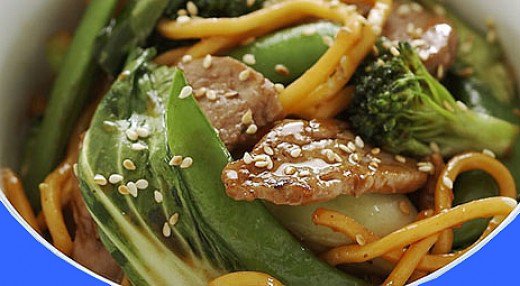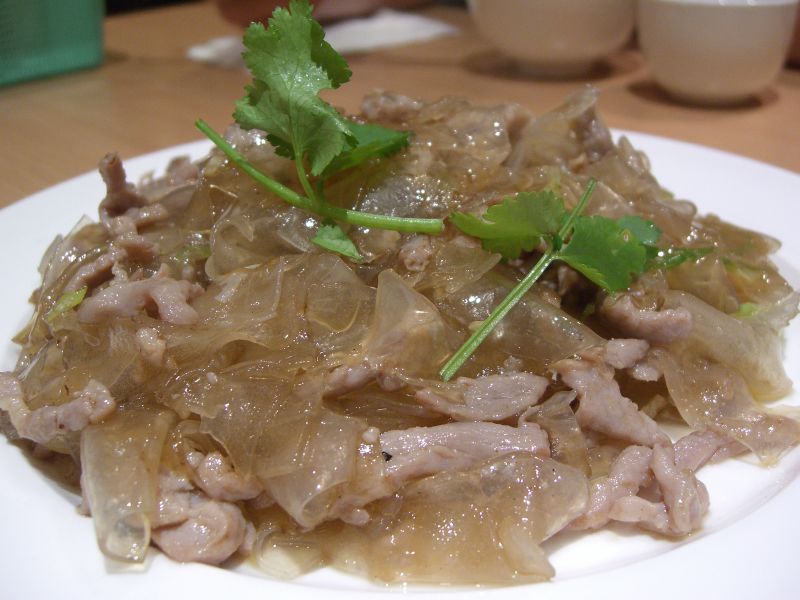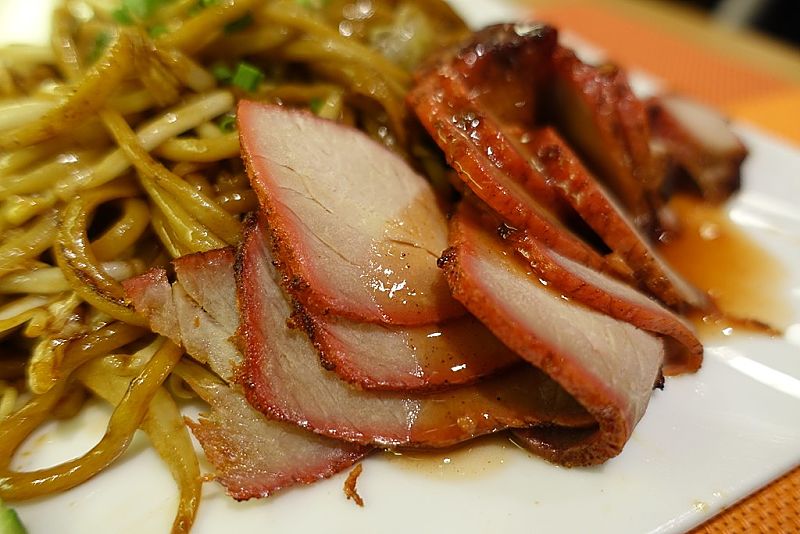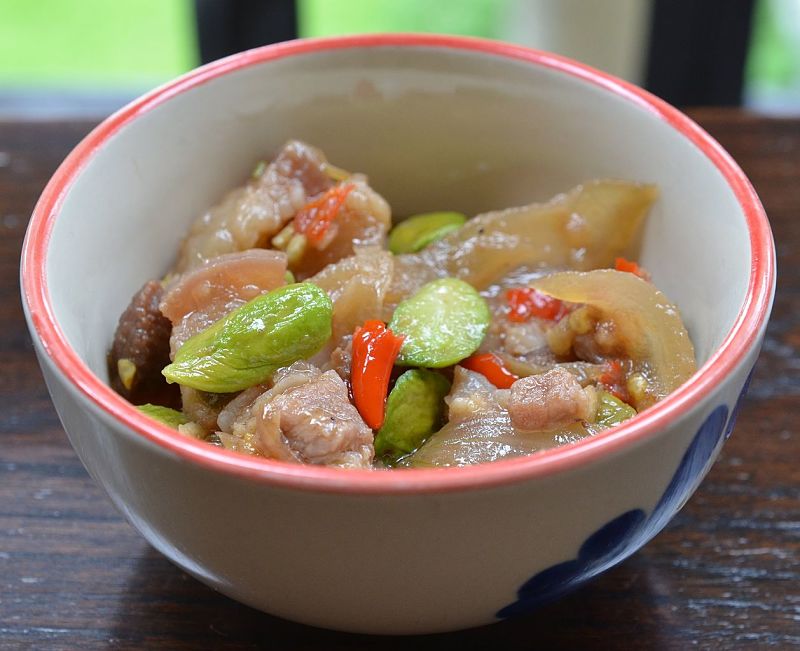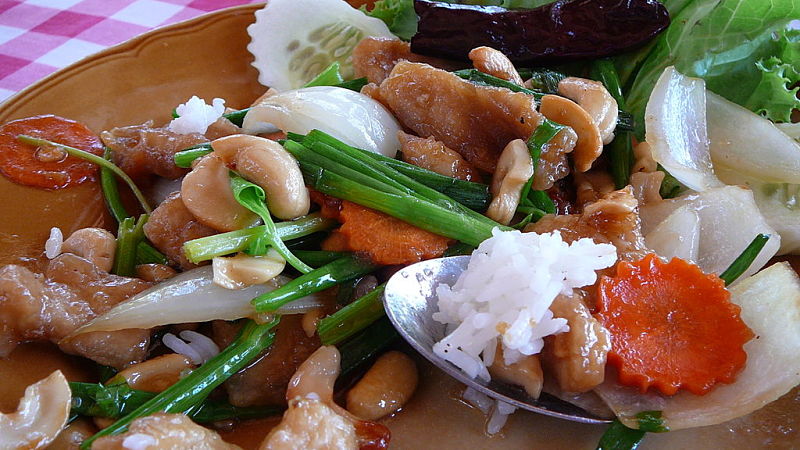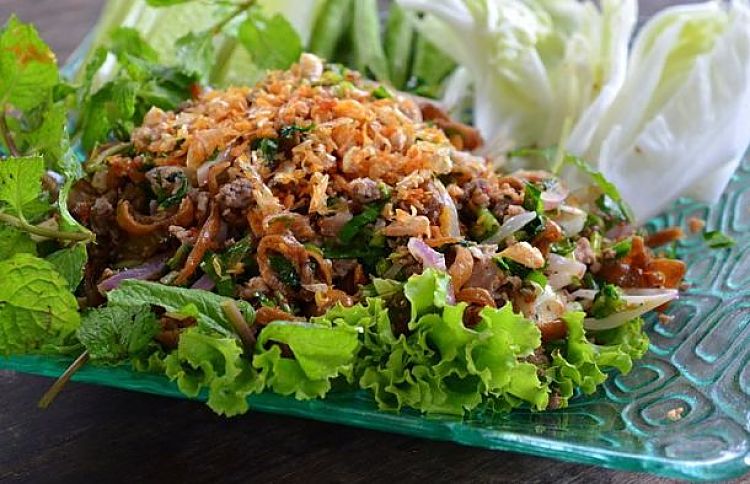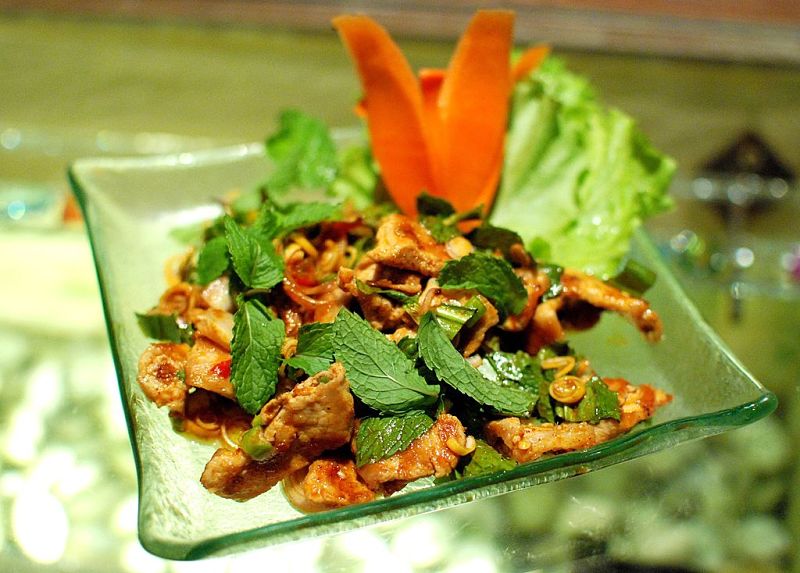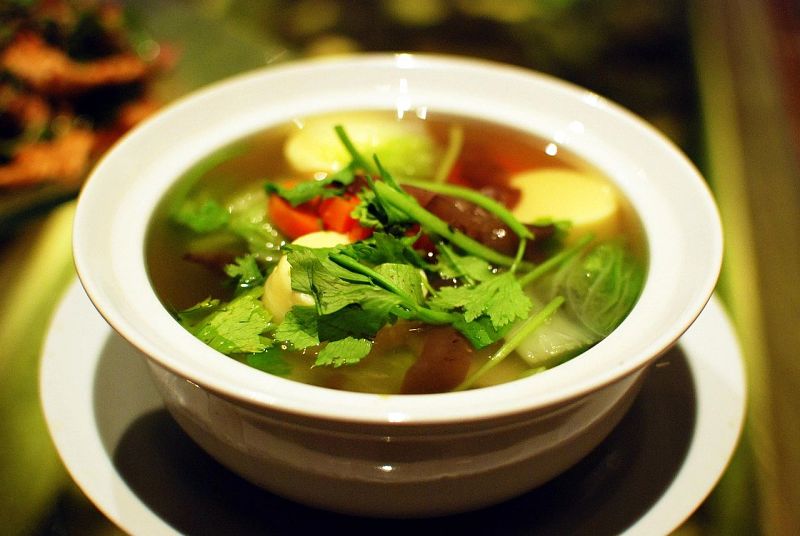Pork Stir Fry Recipes - Easy, Quick, Healthy and Tasty
Everyone loves a good stir fry made with succulent, tender strips of pork, fresh Chinese vegetables and a glossy flavorsome sauce.
But many people are disappointed when they try to make this dish at home. Usually the pork ends up dry, tough and chewy.
The vegetables are over cooked and laden with oil. Or the sauce is too oily and dominated the entire dish.
The first step is to buy the right cut of pork. The best options are: Belly slices, tenderloin fillet and leg meat. The leg meat can be a little dry but the other two have enough fat to prevent drying out and have a lot of flavor.
This article provides a lot of extra advice and a series of fabulous recipes that are quick, easy to prepare and delicious.
Some other hints for the meat are:
- Remove the skin (but leave the fat on the meat).
- Slice the pork and season the meat on both sides just before cooking, or use a marinade to enhance the flavor.
- When stir frying don’t overcrowd the wok – the temperature will drop rapidly and it will be spoiled by stewing in its own juices. Cook the meat in small batches
- Despite what most recipes say - cook the vegetables first, as they keep better than the meat which will continue to cook and dry out which the other ingredients are being cooked. Just cook the pork in batched last, then add back the cooked vegetables and develop the sauce. Leave the meat a little pink because it will finish cooking when the dish is assembled.
Best Tips for Pork Stir Fry Dishes
The Right Equipment for Stir Frying - Temperature control is the Key
Whether you use a wok or a frying pan is up to you, but the key thing is to ensure the pan temperature remains high during the frying. This means matching the batch size to the size of the pan,which should be preheated so that it stored as much heat as possible.
Stir Frying Vegetables - Cut to even size and cook in small batches
A key to good stir-frying is precise and even slicing so the pieces are of uniform-sized so that they'll cook in about the same time. Don't be tempted to bundle them all together as some types such as carrots and onions will take much longer to cook than Chinese cabbage or beans. Again cook in batches consisting of vegetables that will take about the same amount of time. The purists will frown at this, but one excellent idea is to add about 1/4 cup of water towards the end of the cooking period. The steam helps to wilt the vegetables and speeds up the cooking.
The Good Oil for Stir Fries - Choose an oil with a High Smoke temperature, suitable for high temperature frying
Use peanut oil, rice bran oil or grape seed oil - no canola or olive oil, which burn at the high temperature required for stir fries.
Fry the Meat Last when Stir Frying - This prevents over-cooking of the pork and keeps the wok clean
Cook the vegetables in batches and store in a bowl or saucepan for later assembly. If you cook the meat first the surface of the wok will retain residues and may burn as you cook the vegetables. When you cook the meat last these residues become incorporated into the dish as the sauce is developed. So cook the meat last and leave it barely cooked or slightly pink as the cooking will be completed while the sauce is being developed. Cook the meat in batches and when all done reassemble all the cooked ingredients back into the wok and develop the sauce. This works beautifully.
The Stir Fry Sauce - Good Sauces are an Art Form
Sauces enhance the flavor without dominating the dish. Sauces also add an appealing glisten to the food that adds to its appearance.
See the sauce recipes at the end of the article.
Pork Stir Fry - Recipe 1
- 2 teaspoons sesame seeds toasted
- 450 g (16 oz) packet hokkien noodles
- 100 g (3 oz) sugar snap peas trimmed
- 1 bunch baby buk choy quartered, or similar
- 2 tablespoons salt-reduced soy sauce
- 1/3 cup char sui sauce
- 1 broccoli head cut into florets
- 400 g (14 oz) pork fillet trimmed, sliced
- 1 tablespoon peanut oil
Heat about half the oil in a wok or a large heavy frying pan on high. Stir-fry broccoli for 1-2 minutes, add the buk choy and snap peas and stir fry until just tender. Remove from the wok. Add more oil and let wok re-heat. Stir-fry pork for about 1-2 minutes until just starting to brown. Blend the sauce ingredients together in a cup. Transfer the pork and vegetables back to the wok and add the noodles. Mix thorough for about 1 minute, add the sauce mixture and fry for another minute or so to develop the sauce. Sprinkle with sesame seeds and serve immediately.
Pork Stir Fry with Vegetables - Recipe 2
- 1 bunch broccolini, chopped, or similar
- 150 g (6 oz) snow peas, halved lengthways
- 2 red capsicums, de-seeded, cut into strips
- 1 brown onion, halved, cut into wedges
- 300 g (11 oz)pork fillet, thinly sliced
- 1 tablespoon fine-chopped fresh ginger
- 1 tablespoon of grape seed oil
- 2 teaspoons reduced-salt soy sauce
- 2 teaspoons hoisin sauce
- 1/4 cup vegetable stock
- 4 cups steamed basmati rice, to serve
Combine the soy sauce, stock and hoisin sauce in a bowl and aside. Heat a large wok on a high heat with some of the oil. Add the onion, stir fry for about a minute until the onions are transparent. Add the capsicum, snow peas and broccolini and stir-fry for about 2 minutes and set aside. Add a little extra oil and heat to high temperature, add the ginger stir-fry about half the pork for 2 minutes. Remove and repeat with the remaining pork. Return the vegetables to the wok and add the sauce mixture. Stir-fry while mixing well for about 2 minutes or until heated through and the sauce has formed a glistening, transparent covering over the ingredients. Serve the pork stir-fry with the steamed rice.
Pork Stir Fry - Recipe 3
- 1 cup Thai basil leaves (see note)
- 1 tablespoon brown sugar
- 2 tablespoons lime juice
- 1 1/2 tablespoons fish sauce
- 100 g (4 oz )green beans, cut into 5cm lengths
- 2 tablespoons gluten-free massaman curry paste
- 500 g (1 lb) pork, sliced
- 2 garlic cloves, finely chopped
- 1 tablespoon finely chopped ginger
- 1 long red chilli, finely chopped
- 1 tablespoon finely chopped lemongrass
- 1 red onion, sliced into thin wedges
- 1 tablespoon peanut oil
- 1 tablespoon of cornflour, arrowroot or rice flour dissolved in 3 tablespoons of water
- Cooked thin rice noodles, to serve
Add some of oil to a wok or frying pan and heat to medium-high temperature. Add the onion, lemongrass, chilli, ginger and garlic and stir fry for about a 1 minute. Stir fry the vegetables for about two minutes and then remove from the wok. Add some more oil, reheat then stir fry the pork in batches until the pork is just cooked. Re-assemble all the pork in the wok, add the curry paste and fry for one minute. Then return the vegetables and add the fish sauce, sugar, cornflour lime juice, sugar, and fry for about 1-2 minutes. Add the basil and serve on rice noodles or with rice.
Pork Stir Fry - Recipe 4
- 1/2 cup plum sauce, with 1 teaspoon of cornflower or arrowroot dissolved in water, added to it.
- 200 g (7 oz) sliced button mushrooms
- 3 teaspoons of finely grated fresh ginger
- 1 carrot, peeled, thinly sliced
- 1 brown onion, halved, thinly sliced
- 500 g (1 lb) good quality pork cut into strips
- 1 tablespoon peanut or grape seed oil
- 1 x 450g (1 lb) packet fresh rice noodles
- 2 small bunches of baby pak choy
- Chopped fresh coriander, to serve
Cut the pak choy leaves from the stems, then coarsely chop the stems. Prepare the noodles in the usual way. Add half of the oil to the wok and heat over high heat until the oil is just about to smoke. Add the carrot, onion, and ginger, and stir-fry for 2 minutes or until the onion is transparent and soft. Set aside then stir fry the mushroom and pak choy stems for about 1 minute. Add the remaining oil and heat, and stir fry the pork. In batches for about 2 minutes or until lightly browned and just cooked. Set aside. Re-assemble all the ingredients in the wok and add the sauce ingredients. Stir-fry for 2 minutes or until the sauce thickens. Sprinkle with coriander and serve immediately.
Simply the Best Stir-Fry Sauce Recipes
All the sauces shown below are for dishes that serve about four people (i.e for about 500 g (1 lb) of meat, pork, chicken or tofu and about 4 cups of sliced vegetables. To thicken the sauces add 1-2 teaspoons or cornflour or arrowroot.
Sweet and Sour
- 1 teaspoons sesame oil
- 2 tablespoon soy sauce
- 1/3 cup apricot jam
- salt and pepper
Creamy Coconut
- 1 teaspoons brown sugar
- 1 tablespoon lime juice
- 1 tablespoon fish sauce
- 1 tablespoon fresh chopped coriander
- 1 tablespoon green or red curry paste
- 1/2 cup light coconut milk
Soy and ginger
- 1 teaspoons honey
- 1 clove crushed garlic
- 2 teaspoons grated ginger
- 2 tablespoon oyster sauce
- 2 tablespoon soy sauce
More Images
